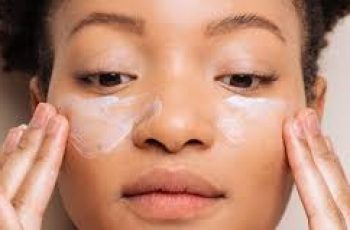
How Does a BHA Peel Work?
Facial acid exfoliation has become a part of almost everyone’s daily skincare routine. From cleansers, toners, and leave-on products, there is sure to be a product that will fit into your routine and offer a variety of skin benefits.
That’s where our post for today comes in, where we’ll answer some of your questions about BHA peels and how they actually work. Beta-hydroxy acid (BHA), also known as salicylic acid, is a powerful facial acid that, unlike AHA, is oil-soluble, meaning it can penetrate deeper into the skin’s layers and unclog pores by unclogging them from bacteria, dirt, or excess sebum. Over time, this can lead to blemishes, blackheads, and other forms of acne. It also removes the buildup of dead skin cells that can cause your skin to appear dull, flaky, and lackluster.
Don’t forget, you can learn more about beta hydroxy acids on our website.
How to Use a BHA Peel?
Using a BHA peel depends largely on the product you use that has the acid in its formula. As mentioned earlier, there are a variety of products to choose from.
Face wash or cleanser
Requires water and rinse
Great for morning use to brighten your complexion for the day ahead
Always apply SPF at the end of your routine to protect from the sun
Can also be used at night to remove bacterial buildup, dirt, and traces of product
Cleansers/washes are better for skin types prone to dryness, as the product is rinsed off the face and the skin is treated for a shorter period of time
Exfoliating toner
Use with a cotton pad and apply to the skin
Often more effective than a cleanser, helps the BHA penetrate deeper into the skin to clear clogged pores and bacterial buildup
Helps remove dead skin cells that make the skin appear dull
Can be used morning and night if skin has no signs of sensitivity
Serum or facial oil
Apply after cleansing and before moisturizer
Can be used morning and night
Serums and oils stay on the skin longer and work faster
This product is best for those with oily skin and those who break out frequently
When adding BHA to your skincare routine, you first need to make sure your skin is benefiting from it and not reacting. If you find that your skin is prone to extreme dryness and sensitivity, it’s best to consult a dermatologist.
Can I use a BHA peel every day?
This depends on your skin type and the amount of salicylic acid in the product’s formula. For over-the-counter products, the percentage is usually lower than for prescription products. For those with dry and sensitive skin, it’s best to use a BHA peel as directed by a dermatologist or skin care specialist.
In most cases, using a BHA peel every day should provide a range of benefits to your skin, especially if you have oily or blemish-prone skin. Simply use a moisturizing product containing hyaluronic acid and niacinamide in your skincare routine to keep your skin’s water and oil levels balanced. If you notice that your skin starts to feel tight, uncomfortable, and dry at any time, use your BHA peel less often to allow your skin to restore balance to its outer layer and protective skin barrier.
How long does it take to work?
You’ll find that using products containing salicylic acid, especially chemical toners, can produce immediate results. Skin will look fresher and have a healthy glow. When treating acne or other blemishes, you can expect to see results in 4-6 weeks. This is due to the consistent use of salicylic acid, especially when mixed into a facial serum that you use at night. This means that not only can the BHA stay on the skin longer, but it can also work undisturbed without being exposed to free radicals and other skin-damaging agents, such as UV radiation and environmental pollution.
Do BHAs dry out the skin?
BHAs are very potent and when formulated in active amounts, they can be a powerful ingredient in products. This means that it can have very effective effects on the skin, but also very drying effects.
How to avoid BHAs drying out the skin:
Make sure it is safe to use a BHA that is appropriate for your skin type. If you have concerns, consult a dermatologist.
If you feel your skin is tight or dry when using a BHA, use the product less often to allow your skin to regain balance.
Do not overuse products containing BHAs. Let the percentages in the formula work their magic. Do not use extra amounts in the hope of getting results faster. This will only cause your skin to become drier and develop a more severe rash.
Always use highly hydrating ingredients in your serums and moisturizers to keep your skin comfortable and your skin barrier functioning properly.
What should you do after using a BHA?
After applying a BHA, you need to take a few steps in order for the ingredient to work its beneficial effects on your skin. This also depends on which product contains the acid, as the following steps can be alternating.
Cleanser or Face Wash – Follow this step with a good skin care regimen, using hyaluronic acid or niacinamide, to hydrate the skin and protect the outer layer of the skin.
Exfoliating Toner – After using a hydrating serum or moisturizer, make sure to protect your skin from UV rays with an SPF 30 or higher.
Serum or Essential Oil – It’s important to protect your skin from the sun, especially when using a serum or essential oil, as the BHA will continue to work on the skin. Apply a layer of SPF during the day and cleanse thoroughly at night to avoid product buildup.
Here you can find some answers to your questions about how a BHA peel works. Once your skin has developed a good tolerance for this powerful ingredient, you’ll find that your complexion looks better than ever!


